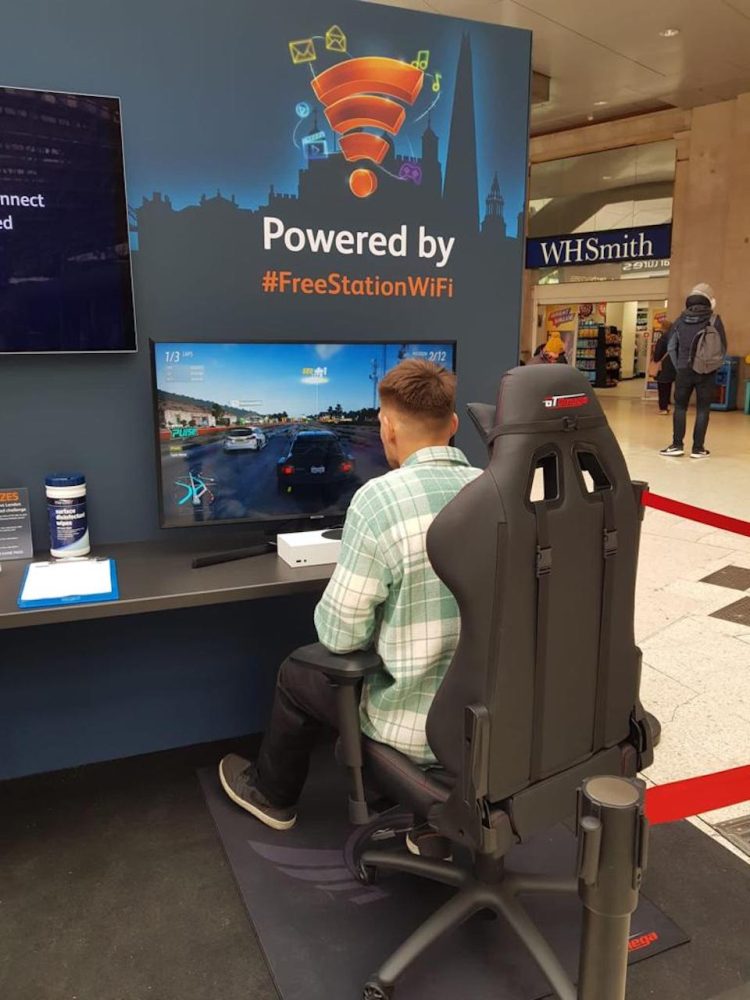Customers can now take advantage of the new free superfast unlimited Wifi service at London Waterloo station which is fast enough to support activities such as video calling and streaming.
The Wifi coverage will be available on the concourses, platforms, forecourts, taxi ranks and mezzanines, and once a passenger has logged in will automatically connect when they arrive at any of Network Rail‘s 19 managed stations throughout the UK.
In a bid to celebrate the new WiFi facility at Waterloo station, Network Rail organised an Xbox gaming event which saw passengers and passers-by compete to win Xbox prizes against customers and members of the public at Glasgow Central station playing live using the station’s new Wifi.

Passengers had a great time playing the motorsport game Forza with live footage of each player streamed using webcams and a live leaderboard that displayed the top scores between Waterloo and Glasgow Central stations. The event finished with an exciting 10-10 draw although Waterloo did achieve the two fastest times.
Cem Davis, Station Manager, Network Rail, said:
“Our passengers have told us consistently through our surveys that free WiFi would be the key improvement they would like to see, and we’ve listened.
“We are committed to doing everything we can to make sure the station experience is as smooth and enjoyable as it can be for all our passengers, colleagues and station users, especially as we welcome more people back to the railway, and providing free WiFi is a key part of that.”





Responses
Most people who commute on the trains now have 5G on their smart phones and devices.
That strikes me as unlikely to be honest. Most people don;t have 5G, but it may be that commuters do. I would be interested in reading the source of your statement, whichever survey or report it came from.
The best report I can find states…
” 4G and 5G services usage in the United Kingdom (UK) in 2021
Published by S. O’Dea, Aug 12, 2021
As of March 2021, 83 percent of the respondents in the United Kingdom (UK) had a 4G service on their smartphone, and eight percent had a 5G service, while only four percent did not have either a 4G or 5G service.”